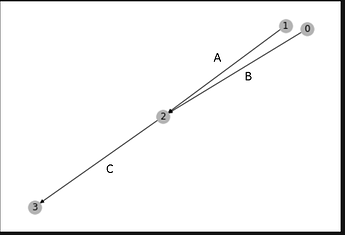Hi, Thank you very much for reading my question, this is a truly wonderful community !
I am new to graph nn sorry if I am not making sense. I was reading a paper :
Skeleton-Based Action Recognition with Directed Graph Neural Networks
in which model skeleton as : bones as edges and joints as nodes.
there is one line in the paper :
the model can extract the angle information of a joint (node), which
needs only the information of one joint and its two connected bones (edges?).
I am wondering in
def f_edge(edges):
return {'cc': edges.src['h']}
g.apply_edges(f_edge)
how can I get the [ last edge(s) ] that an edge's source node connected from ? I read other posts and found out about in_edges and out_edges but dont quite know how to use it in User-defined Functions. Thank you very much

